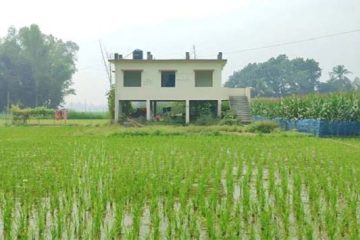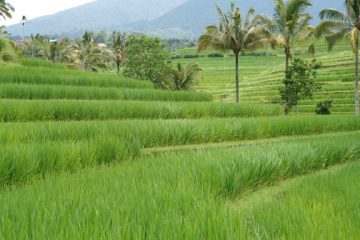 The government plans to redesign Dhaka Zoo and import more animals and birds to make it ‘one of the best in Asia,’ according to one of the designers.
The government plans to redesign Dhaka Zoo and import more animals and birds to make it ‘one of the best in Asia,’ according to one of the designers.
Dr Khandakar Shabbir Ahmed, a BUET professor involved in the redesign, told New Age that the landscape on which the zoo was located could allow the zoo to gain an international reputation.
Dr Shahid Ullah, the zoo curator, told New Age that the ministry of fisheries and animal resources had signed an agreement with a team from the Bangladesh University of Engineering and Technology’s department of architecture to undertake a land survey as part of the zoo’s modernisation project worth Tk 114 crore.
In the recent years, the zoo had come under criticism for the poor condition in which some of the animals were kept resulting in the deaths of a good number of animals.
‘The ministry of fisheries and animal resources has taken a plan to modernise the zoo but it will take at least one year to be implemented based on the survey report by BUET,’ said the curator.
Included in the project is the idea of having video screens at the entrance of the zoo showing footage from the cages of the animals inside the zoo.
He added that more than 200 animals belonging to 44 species, including snakes, birds, spectacle langurs, monkeys, horses, camels, giraffes, zebras, chimpanzees, rhinos, ostriches, and emu-ostriches, would be imported to the zoo.
In 2008, after a gap of ten years, 39 animals were imported to Dhaka Zoo.
To make the spot more attractive, the curator said they had plans for bridges over the lakes, soundless vehicles for the disabled and elderly and boating on the north and south lakes. The appointment of a foreign zoo specialist was also under consideration, he said.
‘A parking lot will also be constructed for the visitors, since the present parking system is not proper and creates problems for both visitors and the zoo authority,’ said Shahid Ullah.
Abu Sayeed M Kamal, the zoo’s nutritionist, said the zoo would for the first time import a sophisticated machine to test the feed for the animals.
‘Medicine worth Tk 16 lakh will also be imported to the veterinary hospital,’ said the nutritionist.
Professor Khandakar Shabbir Ahmed told New Age that the zoo had the potential to be one of the best in Asia as it had a very good landscape.
‘The tradition is changing; we will design a safari park rather than just a zoo. We are thinking of using moats to cage in the animals without bars, which is more suitable for the animals,’ said Professor Shabbir.
He also said that a team of six lecturers would look into the traffic and pedestrian flow to reduce congestion at the zoo entrance.
‘I think the zoo will get an international reputation and I will work for it,’ he said.
‘The current environment at the zoo is unfriendly for the animals because of sound pollution, visitor’s aggressive behaviour to the animals and also the improper health care management,’ he added.
The zoo authorities, however, claimed that the media publicity on the deaths of animals at the zoo was unfair.
They pointed that animal mortality rate at the zoo was between two and three per cent, while according to the World Association of Zoos and Aquariums normally at least five to six per cent of animals of a zoo die in a year.
The zoo is located on a sprawling 186 acres in Mirpur, accommodating around 1,974 animals belonging to 148 species including 11 tigers and 11 lions.






